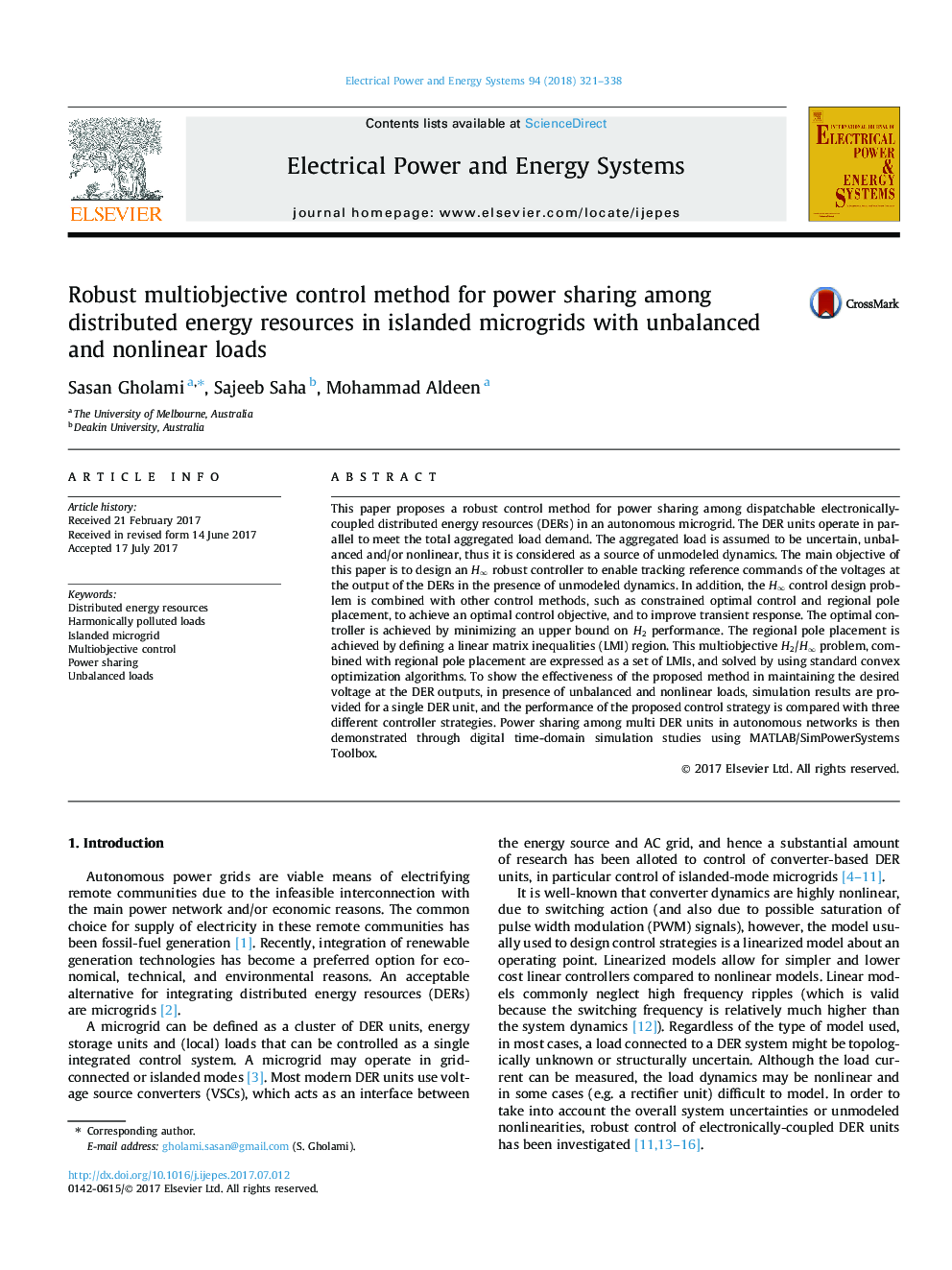| Article ID | Journal | Published Year | Pages | File Type |
|---|---|---|---|---|
| 4945599 | International Journal of Electrical Power & Energy Systems | 2018 | 18 Pages |
â¢The proposed controller can be used for electronically-coupled DERs in islanded microgrids, where the aggregated local load could be unbalanced or harmonically polluted.â¢The proposed controller guarantees the control inputs do not violate the PWM saturation limits.â¢Using this method, a satisfactory transient response for the DER unit can be obtained by bounding the rise time, settling time and maximum overshoot.â¢This paper also proposes a frequency control strategy, which together with conventional frequency/power droop control is able to control parallel multi-DER units.â¢Comprehensive comparative results are provided in this paper to demonstrate the advantages of the multi-objective control strategy.
This paper proposes a robust control method for power sharing among dispatchable electronically-coupled distributed energy resources (DERs) in an autonomous microgrid. The DER units operate in parallel to meet the total aggregated load demand. The aggregated load is assumed to be uncertain, unbalanced and/or nonlinear, thus it is considered as a source of unmodeled dynamics. The main objective of this paper is to design an Hâ robust controller to enable tracking reference commands of the voltages at the output of the DERs in the presence of unmodeled dynamics. In addition, the Hâ control design problem is combined with other control methods, such as constrained optimal control and regional pole placement, to achieve an optimal control objective, and to improve transient response. The optimal controller is achieved by minimizing an upper bound on H2 performance. The regional pole placement is achieved by defining a linear matrix inequalities (LMI) region. This multiobjective H2/Hâ problem, combined with regional pole placement are expressed as a set of LMIs, and solved by using standard convex optimization algorithms. To show the effectiveness of the proposed method in maintaining the desired voltage at the DER outputs, in presence of unbalanced and nonlinear loads, simulation results are provided for a single DER unit, and the performance of the proposed control strategy is compared with three different controller strategies. Power sharing among multi DER units in autonomous networks is then demonstrated through digital time-domain simulation studies using MATLAB/SimPowerSystems Toolbox.
